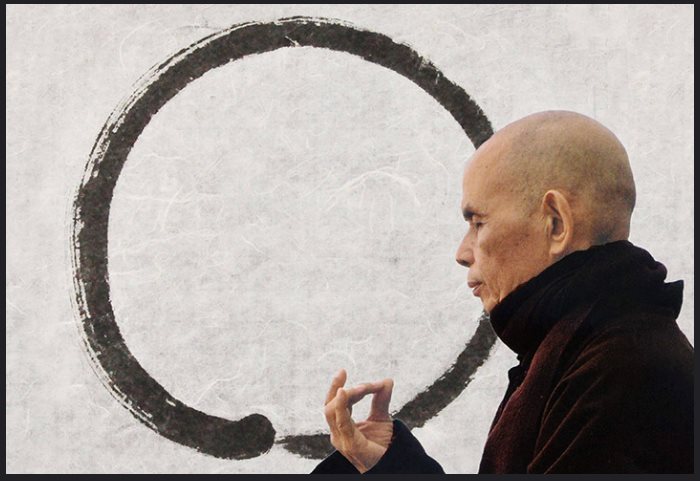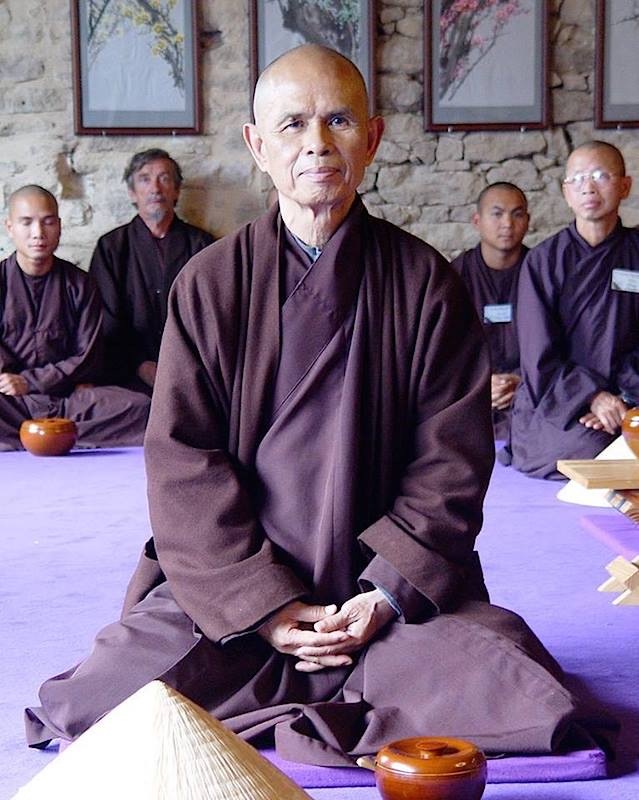by Pam Marraccini | Buddha, heart, love, Thich Nhat Hanh, Uncategorized, understanding
Thich Nhat Hanh, Answers From The Heart
The teaching of the Buddha aims at helping us to generate the energy of love and understanding. If we can practice that energy, it will first of all help us to satisfy our need to be loved. And then, with that capacity of love and understanding, we can embrace the people who are with us now. We can make them happy while we are happy ourselves.

by Pam Marraccini | anger, compassion, love, Peace, present, suffering, understanding
#233 The Sun Always Shines
Your True Home, Everyday Wisdom of Thich Nhat Hanh

When it is raining, we think there is no sunshine. But if we fly high in an airplane and go through the clouds, we rediscover the sunshine again. We see that the sunshine is always there. In a time of anger or despair, our love is also still there. Our capacity to communicate, to forgive, to be compassionate is still there.
You have to believe this. We are more than our anger; we are more than our suffering. We must recognize that we do have within us the capacity to love, to understand, to be compassionate. If you know this, then when it rains you won’t be desperate. You know that the rain is there, but the sunshine is still there somewhere. Soon the rain will stop, and the sun will shine again. Have hope. If you can remind yourself that the positive elements are still present within you and the other person, you will know that it is possible to break through, so that the best things in both of you can come up and manifest again.
by Pam Marraccini | awareness, Buddha, compassion, daily life, deep looking, Four Elements, happiness, heart, love, meditation, mindfulness, present, Smile, Thich Nhat Hanh, understanding
Present Moment Wonderful Moment

by Thich Nhat Hanh
#7 Looking in the Mirror
Awareness is the mirror
Reflecting the four elements.
Beauty is a heart that generates love
And a mind that is open.
The moments during the day of looking in the mirror can be moments of deep awareness. The mirror can serve as a tool for cultivating mindfulness so that we develop a broad capacity to understand and love others. Anyone who maintains awareness in the present moment becomes beautiful and naturally emanates peace, joy, and happiness. A calm half smile and a loving heart are refreshing, and they allow miracles to unfold. The Buddha’s smile is beautiful because it expresses tolerance, compassion, and loving kindness.
In Vietnamese culture, the four great elements are earth, water, fire, and air. The Vietnamese poet wrote;
The flower with its ephemeral fragrance,
Is made of the four elements.
Your eyes, shining with love,
Are also made of the four elements.
The four elements are neither mind nor matter. They are the universe itself revealed to us. When your mind is the clear mirror of meditative awareness, you will know that you are the outward expression of the essence of reality. So please smile. Smile with your eyes, not just your lips. Smile with your whole being, reflecting the four elements of the mirror of mindful awareness.
by Pam Marraccini | enlightenment, freedom, liberation, love, suffering, Thich Nhat Hanh, transformation, true home

Bodhicitta (Sanskrit) is the mind of enlightenment, beginner’s mind. When we’re inspired by the desire to practice and transform our suffering so we can help the many people around us who suffer, the mind of that moment is very beautiful. It’s a mind of a bodhisattva, one who attains his or her own liberation in order to help all beings. Sometimes we call it the “mind of love.” It’s because of love that we practice. We’re not just trying to run away from suffering. We want more than that. We want to transform our own suffering and be free in order to help many other people to transform their suffering.
Thich Nhat Hanh, Your True Home, the everyday wisdom of TNH
by Pam Marraccini | compassion, love
 Promise me,
Promise me,
Promise me this day,
Promise me now,
While the sun is overhead
Exactly at the zenith,
Promise me:
Even as they
Strike you down
With a mountain of hatred and violence;
Even as they step on you and crush you
Like a worm,
Even as they dismember and disembowel you,
Remember brother,
Remember:
Man is not our enemy.
The only thing worthy of you is compassion –
Invincible, limitless, unconditional.
Hatred will never let you face
The beast in man.
One day, when you face this beast alone,
With your courage intact, your eyes kind,
Untroubled
(even as no one sees them),
out of your smile
will bloom a flower.
And those who love you
Will behold you
Across ten thousand worlds of birth and dying.
Alone again.
I will go on with bent head,
Knowing that love has become eternal.
On the long, rough road,
The sun and the moon
Will continue to shine.
-Thich Nhat Hanh, 1965
by Pam Marraccini | anger, awareness, breathing, Buddha, Buddhist psychology, compassion, concentration, consciouness, deep looking, heart, ignorance, joy, love, meditation, mindfulness, nonduality, seeds, suffering, Thich Nhat Hanh, understanding

Understanding is the fruit of meditation. When we practice deep looking directed toward the heart of reality, we receive understanding, we receive the wisdom that makes us free. If there is deep pain within you, meditate.
Meditating is not trying to run away, trying to ignore the presence of the pain, but on the contrary, it is looking at it face-to-face. You have to practice deep looking directed toward the nature of this pain because for Buddhists, we are joy, but we are also pain; e are understanding, but we are also ignorance. Meditating is not transforming oneself into a battlefield where one side is fighting another, where good fights against evil. This is not Buddhist meditation. Buddhist meditation is based on the principle of non-duality. This means that if we are mindfulness, if we are love, we are also ignorance, we are also suffering, and there is no reason to suppress anything at all.
When the seed of anger manifests on the level of our conscious mind, our immediate awareness, it is because the seed of anger is in the depths of our consciousness, and then we begin to suffer. Our immediate awareness is something like our living room. The task of the meditator is not to chase away or to suppress the energy of anger that is there but rather to invite another energy that will be able to care for the anger.
You can use the method of mindful breathing to make the seed of this other energy grow inside of you. It will then manifest in the form of energy, and this energy will embrace your energy of anger like a mother taking a baby in her arms. Then there is only tenderness, there is no fighting with, or discriminating against, the pain. The purpose of the practice of mindful breathing is to help to give birth to this precious energy called mindfulness and to keep it alive.
… Mindfulness is like a light, enabling concentration to really be there, and that also makes it possible for us to look deeply into the heart of things. From this looking deeply is born deep vision, understanding. Mindfulness brings concentration, understanding, love and freedom.
…when the energy of compassion and love touches us, healing establishes itself.
In Buddhism, we say that mindfulness is the energy of the Buddha. The seed of mindfulness is the baby Buddha that is in us. This precious seed can be buried very deeply under several layers of suffering and ignorance. We begin by looking for, by touching this seed of mindfulness, and everybody knows that all of us have this precious seed in us.
When you drink water, if you are aware of the fact that you are drinking water, mindfulness is there. Mindfulness is the energy that makes it possible for us to be aware of what is happening in the present moment.
When you breathe in and you are aware that you are breathing in, mindfulness is there. Mindfulness is always mindfulness of something. When you are angry and yu know that you are angry, mindfulness is there. Anger is one energy, mindfulness is another, and this second kind of energy arises in order to care for the first like a mother caring for her baby.





